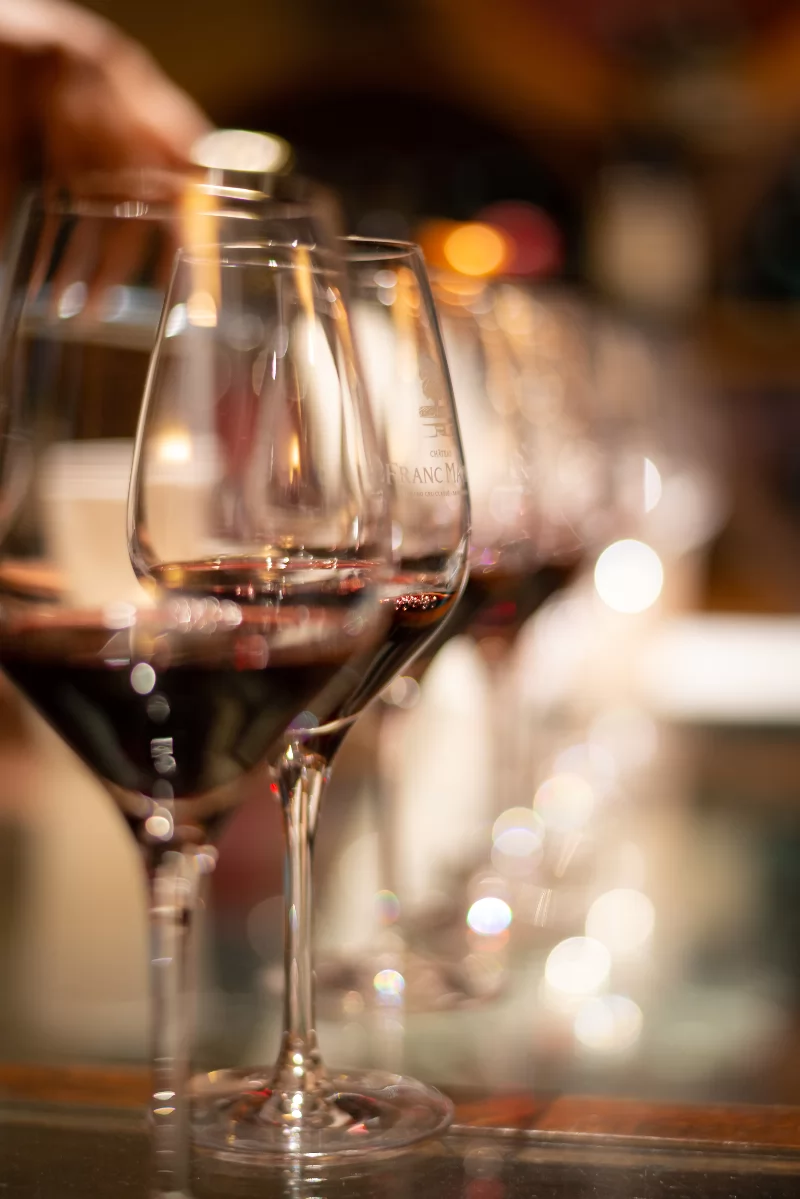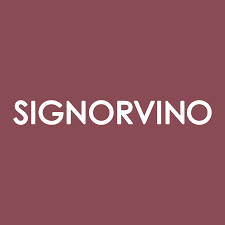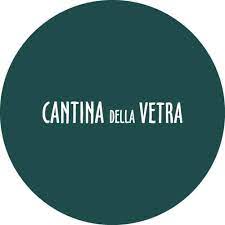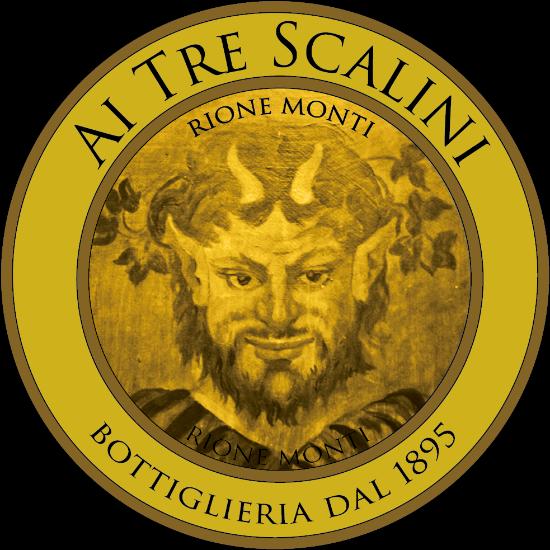Sintesi
As of 2020, the global wine market demonstrates significant activity with Italy being a notable player, holding a leading position in production and having a dynamic wine bar market. Despite facing challenges from the COVID-19 pandemic, causing a decline in wine production to 259 million hectoliters and a 4.1% decrease in consumption to 234 million hectoliters, the Italian wine bar industry shows resilience with more than 7,300 establishments, a 13% cumulative growth, and a surge in online sales and deliveries. Direct wine employment in Italy surpasses 8,000 employees. The United States is the primary destination for Italian wine exports, accounting for 23% of exports, while France is the largest source of Italian wine imports. Despite economic obstacles and shifts in consumer behavior post-pandemic, the Italian wine market exhibits encouraging signs of recovery and adaptation, including the boom in sommelier courses and festivals, suggesting a sustainable growth path for the wine shop sector moving forward.
Evolving Trends and Steady Growth in Italy's Wine Bar and Shop Market
In the recent years, Italy’s wine bar market has witnessed compelling growth trends and significant shifts in consumer behavior. With an increase of approximately 4% in the number of wine bars over five years. This upswing is reflected in sales as well - during holiday seasons, wine bars have seen their turnover rise by as much as 20%. Notably, Lombardy leads in regional density with close to a thousand wine bars, while major cities like Rome, Naples, and Milan form a trifecta representing the urban hotspots for wine enthusiasts. Employment is another revealing indicator of market vitality, as the sector currently engages roughly 8,000 individuals with an average of slightly more than one person per wine bar – showing a 10% increase in employment over the same five-year period. Additionally, the presence of women entrepreneurs at the helm of 27% of these establishments and youth (under 25 years old) managing 11% underscores a diversity in market participation.
Economic insights showcase that wine bars with revenue up to 350,000 euros are experiencing a robust 15% increase in average turnover, attesting to the sector's resilience. Despite the challenge posed by the advent of e-commerce, wine shops have ingeniously adapted by incorporating online ordering and delivery services, where the largest online wine retailer, Tannico, experienced a 40% surge in online orders. While direct-to-consumer sales form the core at 97%, business-to-business transactions have witnessed a recent rise. Consumer behavior has unequivocally evolved; the monolithic wine drinker of post-war Italy has made way for a more eclectic clientele, who display a penchant for diversity in their wine choices, often influenced by the occasion. The younger generation, in particular, showcases a trend towards exploration, continually seeking new labels and information. With the national economy on the path to recovery and tourism forecasted to reclaim its former glory, the wine bar market is poised for resurgence. Indicators such as the increasing popularity of sommelier courses and wine festivals over the last couple of years can be seen as harbingers of a thriving future for the wine industry in Italy.
Key Players Shaping the Italian Wine Bar Industry
The Italian wine bar market, though multifaceted and dispersed throughout the peninsula, is anchored by several influential businesses and consortia. These key players not only contribute to the market's competitive dynamics but also help in shaping the industry's future trends and practices. Without delving into the financials of these entities, let's explore some of the notable companies and associations mentioned in the text.
- Vinarius: The Consortium Champion Vinarius stands out as one of the largest consortiums or associations of wine bars in Italy. Boasting a membership of over 120 wine bars, Vinarius plays a pivotal role in setting the benchmark for wine bar operations. The association underpins the network's quality standards and provides a collective voice for the wine bar proprietors. Their influence is significant in promoting the wine bar culture and ensuring that its members can navigate the industry's competitive landscape effectively.
- Tannico: The E-commerce Success Story Tannico marks its territory as the largest online retailer for wine shops in Italy. This platform has seen remarkable growth, with a significant uptick in online order volumes, including an impressive segment of international shipping. The digital expansion of Tannico indicates an adaptive and innovative approach to wine retail, integrating traditional wine shop values with modern consumer purchasing preferences. It signifies how the industry is evolving, with e-commerce becoming an integral part of wine bars' sales strategies.
- Local Franchise Innovators (Tavernacolo, Wine Beer, Signorvino) Franchises like Tavernacolo and Wine Beer are reimagining the wine bar experience through their unique business models. With Tavernacolo requiring only a modest investment and Wine Beer emphasizing substantial premises for their operations, these franchises illustrate the diverse ways entrepreneurs can establish their presence in the industry. Signorvino, birthed from the powerhouse Calzedonia, showcases a rapid expansion with numerous outlets across Italy open to diners and wine enthusiasts, exemplifying the scalability of the wine bar concept when coupled with a robust brand and strategic business approach.
- Mobile Wine Ventures (CARAVIN, CANTINA TOLLO, TENUTE PICCINI, BOLLICINO) Emerging mobile wine businesses like CARAVIN, CANTINA TOLLO, TENUTE PICCINI, and BOLLICINO take innovation on the road. These ventures capitalize on the niche market of portable, event-centric wine experiences.
per comprendere questo mercato
Dettaglio del contenuto
 Informazioni
Informazioni
- Pagine : 30 pags
- Formato : Versione PDF e digitale
- Ultimo aggiornamento : 23/02/2024
 Riepilogo ed estratti
Riepilogo ed estratti
1 Market Overview
1.1 Definition and scope of the study
Wine bars represent one of the most elegant and refined expressions of contemporary wine culture, offering a unique experience for both novices and experts in the field. These venues, which specialize in the sale and tasting of wines, are distinguished by their ability to combine wine excellence with a welcoming and informative atmosphere. Customers can explore wide selections of wines, often accompanied by high-quality food products that enhance their flavors and characteristics. The growing popularity of wine bars reflects a broader interest in wine and its culture, fitting into a changing market environment.
By 2022, the global value of the wine market is estimated at $441.5 billion, signaling a robust and growing industry. Forecasts for 2023-2030 indicate a compound annual growth rate(CAGR) of 5.90 percent, suggesting that the global wine market could reach nearly $700 billion by 2030. This growth testifies to the growing global demand and the importance of the wine sector in the world economy.
Globally, the period between 2015 and 2022 saw a reduction in the total amount of wine produced, with a 6.8 percent decline from 277.1 million hectoliters to 258.3 million hectoliters. Despite this, Italy maintains its lead as the leading wine producer, contributing 19.3 percent of world production in 2022 and surpassing France and Spain. The three countries together account for more than half of the world's wine production, highlighting their central role in the global wine industry.
In Italy, wine production is characterized by remarkable diversity and quality, the result of a wide range of grape varieties and winemaking techniques. The country is renowned for the production of red and white wines, both still and sparkling, each with unique characteristics related to the terroir and methodologies adopted. This enological richness contributes to Italy's reputation as a world leader in the wine industry.
Increasing climatic instability poses a significant challenge to the sector, causing wide fluctuations in annual production. However, this variability also underscores the importance of innovation and adaptability in the wine industry. Wine bars, as an integral part of this ecosystem, play a crucial role in promoting knowledge and appreciation of quality wines, offering consumers the opportunity to discover the diversity and richness of Italy's and the world's wine heritage.
1.2 Global market analysis
A global wine market value of $***.* billion is estimated for ****. A modest compound annual growth rate(***) of *.** percent is forecast for ****-****. The global wine market is projected to be close to $*** billion in ****.
Wine Market World, ****-****, in billions of dollars Vantagemarket*.research
Regarding wine production, globally between **** and **** there ...
1.3 The Italian market
Between **** and **** we see a tendentially unchanged wine production of **.* million hectoliters. However, analyzing individual vintages shows an increase between **** and **** of *.* percent, a subsequent decline between **** and ****(***). Increasing climate instability presents important consequences for the sector, leading to wide fluctuations in production between years.
Wine production Italy, ****-****, in millions ...
1.4 Import and Export Analysis
To visualize foreign market trends, consider HS Code **** "Wines of fresh grapes, including fortified wines."
Italy can be defined as a net exporter of wine. Between **** and ****, the export coverage ratio, determined by the ratio of exports to imports multiplied by ***, is always above ****%, fluctuating between ****.*% and ****.*%. Specifically, during the period ...
1.5 Impact of the conflict between Russia and Ukraine
The outbreak of the Russian-Ukrainian conflict in February **** had major repercussions on the Italian economic system. The sector related to the production and sale of wine is not exempt from the effects brought about by the outbreak of the conflict. Between January **** and December ****, the consumer price index for the purchase ...
2 Demand analysis
2.1 Overview of demand
The period from **** to **** shows an increase in wine consumption in Italy; total consumption increased from **.* million hectoliters to **.* million hectoliters, representing a growth of *.* percent.
Wine consumption Italy, ****-****, in millions of hectoliters OIV
Between **** and ****, there was also an increase in the number of regular wine consumers in Italy. ...
2.2 Substitute consumption at the Wine-bar
Wine itself is not only a good-tasting alcoholic product, but it is also a symbol for consumers to accompany moments in their lives and social interaction. To understand what direct competitors to consider for the Wine Bar market, we must first start with the wine product and what its substitute products ...
2.3 Demand drivers
For the analysis of the drivers of wine demand in Italy, the distribution of consumers in different age groups and by professional status are considered.
Regarding the distribution of consumers in different age groups, those over ** gather the highest share of consumers, accounting for **.* percent of the national total. They are ...
2.4 Distribution of demand
In order to analyze the geographic distribution of wine demand in Italy, two maps were drawn up that illustrate, respectively, the distribution of wine consumers and the average monthly expenditure per household in the different Italian macro-regions.
The map regarding the distribution of wine consumers shows that the Northwest stands out ...
2.5 Decisive figures in the industry
[***]
2.6 New demand trends
Consumer interest in alcohol-free and low-alcohol wines is growing, reflecting a shift in drinking habits and preferences. This trend is driven in part by increased health awareness, environmental concerns, and demand for fresher, lighter styles of beverages. Consumers, especially younger generations, are showing a growing interest in healthier and more responsible ...
3 Market structure
3.1 Market structure and dynamics
To visualize the size of the market under analysis, we consider Ateco Code **.**.**, comprising: catering with food service - activities of establishments of restaurants, fast-food outlets, delicatessens, fry shops, pizzerias, etc., which have seats - activities of establishments of breweries, pubs, wine bars and other similar establishments with a kitchen. From ...
3.2 Value Chain
The value chain and operation of the wine market and production and distribution in Italy are summarized below. As the Wine-Bar is among the distribution outlet of this larger market, their specific value chain is given below:
3.3 Wine production
When it comes to grape production, between **** and **** the area under vines present in Italy increased from ***,*** hec tares to ***,*** hectares, representing a growth of *.* percent. The growth appears to be constant during the entire period, with the exception of only ****(***).
Area planted with vines Italy, ****-****, in thousands of ...
3.4 Main actors
In Italy, a land of ancient wine traditions, wine bars are popular meeting places for locals and tourists alike to discover and taste quality wines. Here are some of the country's most famous wine bars, each with its own distinctive characteristics:
4 Supply analysis
4.1 Overview of the Offering
In Italy, wine production is distinguished by its diversity and quality, with a wide range of types that vary in color, body, taste, and production methodology.Each grape variety gives the wine unique characteristics, both in terms of aroma and taste, which are further influenced by the specific terroir and winemaking ...
4.2 Prices
To analyze price trends related to wine consumption in Italy, consumer price indexes over the period ****-**** are analyzed for * different product types.
Table wines
Between **** and ****, the price index for table wine consumption shows an increase of *.* points, equal to average price increase of*.*%. Specifically, it shows a *% increase between ...
4.3 Online wine shops
Online buying particularly involves the wine industry. Consumers are happily embracing the idea of buying wine through online wine stores, and responses from wine retailers are growing steadily. In this context, however, consumer habits do not simply reflect the traditional shopping experience; in fact, in an increasingly competitive environment, it is ...
5 Regulations
5.1 Rules and regulations
The following is the essential regulatory overview for the wine bar industry:
Business licenses and authorizations: Legislative Decree **/****: regulates the activities of serving food and beverages and the sale of alcohol.
Sale of alcohol: Law ***/****: measure to prevent and combat excessive and harmful consumption of alcohol (***). Article *** of the Penal Code: ...
6 Positioning of players
6.1 Segmentation
- Signorvino
- Enoteca Pinchiorri
- Cantina della Vetra
- Ai Tre Scalini
- Le Volpi e l'Uva
 Grafica
Grafica
- Mercato del vino
- Produzione di vino
- Produzione di vino, ripartizione per paese
- Consumo di vino, ripartizione per paese
- Produzione di vino
Tutti i nostri studi sono disponibili online e in PDF
Ti invitiamo a consultare un esempio del nostro lavoro di studio su altri mercato!
Aziende citate in questo studio
Questo studio contiene un panorama completo di società di mercato con le ultime cifre e le notizie di ogni azienda :
 Perché Scegliere Questo Studio :
Perché Scegliere Questo Studio :
Accedi a più di 35 ore di lavoro
I nostri studi sono il risultato di oltre 35 ore di ricerca e analisi. L'uso dei nostri studi ti consente di dedicare più tempo e aggiungere valore ai tuoi progetti.
Approfitta di 6 anni di esperienza e oltre 1.500 studi settoriali già prodotti
La nostra competenza ci consente di produrre studi completi in tutti i settori, inclusi i mercati di nicchia o emergenti.
Il nostro know-how e la nostra metodologia ci consentono di produrre studi con un valore unico di denaro
Accedi a diverse migliaia di articoli e dati a pagamento
BusinessCoot ha accesso all'intera stampa economica a pagamento e ai database esclusivi per svolgere studi di mercato (+ 30.000 articoli privati e fonti).
Al fine di arricchire i nostri studi, i nostri analisti utilizzano anche indicatori Web (semrush, tendenze, ecc.) Per identificare le tendenze in un mercato e strategie aziendali. (Consulta le nostre fonti a pagamento)
Supporto garantito dopo l'acquisto
Una squadra dedicata al servizio post-vendita, per garantirti un alto livello di soddisfazione. +39 380 247 7810
Un formato digitale progettato per i nostri utenti
Accedi a un PDF ma anche una versione digitale per i nostri clienti. Questa versione consente di accedere a fonti, dati in formato Excel e grafica. Il contenuto dello studio può quindi essere facilmente recuperato e adattato per i tuoi supporti.
 Le nostre offerte :
Le nostre offerte :
the wine bar market | Italy
- Quali sono i dati relativi alle dimensioni e alla crescita del mercato?
- Cosa sta influenzando l'andamento e l'evoluzione del mercato?
- Qual'è il posizionamento degli attori di mercato?
- Segmentazione e profilo delle aziende operanti nel mercato
- Dati e numeri da una molteplicità di fonti
Pacchetto di 5 studi (-15%) IT Italy
- 5 rapporti a 75,6 € IVA esclusa per studio da scegliere dal nostro catalogo italiano per 12 mesi
- Risparmiare il 15% sugli studi aggiuntivi acquistati
- Scegliere il rimborso del credito non utilizzato al termine dei 12 mesi (durata del pacchetto).
Consulta i termini e le condizioni del pack e del rimborso del credito non utilizzato.






















